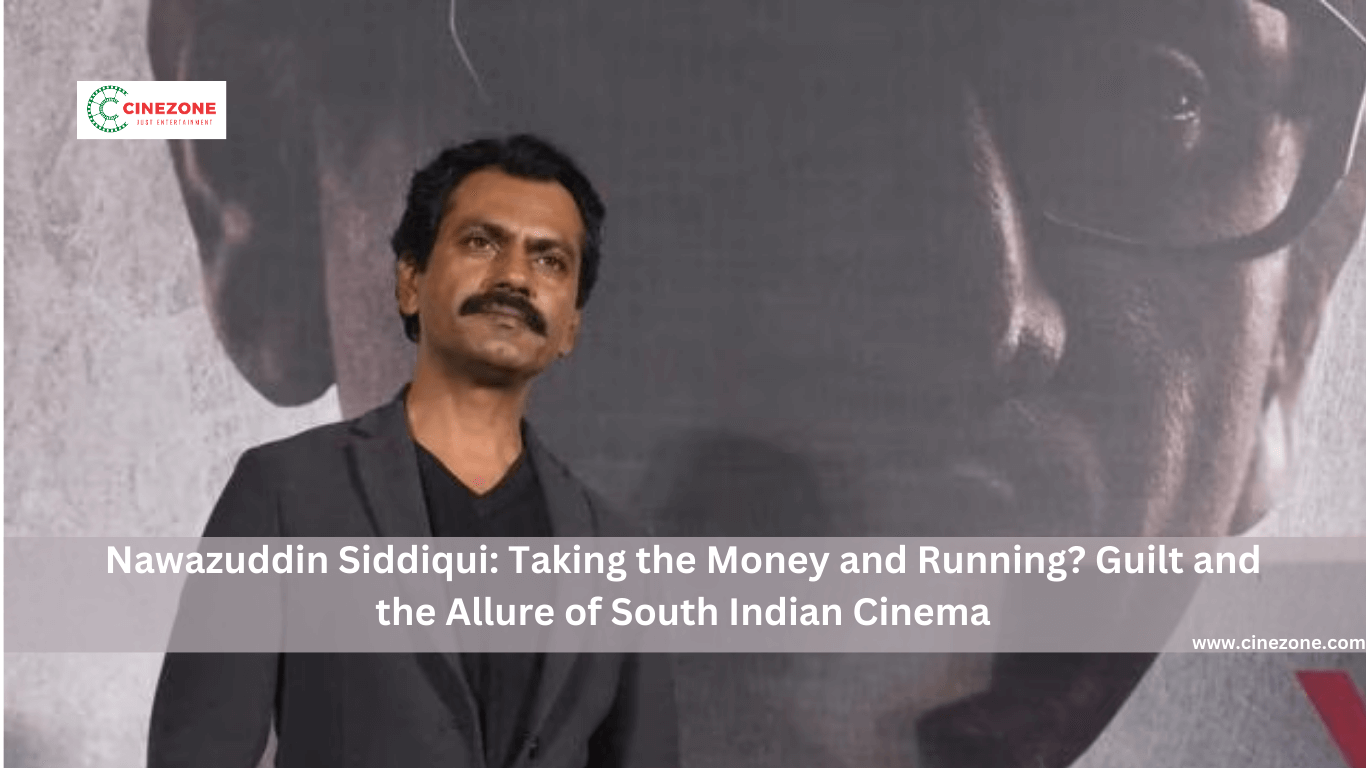Nawazuddin Siddiqui: Taking the Money and Running? Guilt and the Allure of South Indian Cinema
Nawazuddin Siddiqui, a powerhouse of talent renowned for his intense performances in Hindi films, has sparked a conversation about the complexities of language barriers and creative fulfilment in the Indian film industry. In a recent interview, Siddiqui made a surprising confession: he admitted to feeling a sense of guilt for his work in certain South Indian films, specifically mentioning his role in the 2019 Tamil film “Petta” starring Rajinikanth.
Crossing Language Barriers: The Price of Performance
Siddiqui’s discomfort stemmed from a lack of understanding of the Tamil language, causing Language Barriers. He expressed that he relied on prompting and lip-syncing for his dialogues, leaving him feeling like he wasn’t fully invested in the character or the film itself. This disconnect, according to Siddiqui, resulted in a sense of “cheating” the audience and the craft.
His comments raise critical questions about the impact of language barriers on artistic expression. While acting is often considered a universal language, the ability to grasp the nuances of dialogue and cultural context undeniably enriches a performance. Siddiqui’s experience highlights the challenges faced by actors working outside their native languages, particularly when the focus shifts from character development to simply delivering lines.
The Allure of South Indian Cinema: Big Names, Big Budgets
However, Siddiqui’s confession is not a blanket condemnation of South Indian cinema. He acknowledged the financial benefits of working in these industries, mentioning the significant remuneration offered compared to Hindi films. This financial incentive, particularly for actors like Siddiqui who have carved their niche in unconventional roles, can be a powerful draw.
The South Indian film industry, particularly Telugu and Tamil cinema, boasts massive budgets and a fiercely loyal fanbase. Big-ticket productions often feature elaborate sets, action sequences, and larger-than-life characters – a stark contrast to the often-gritty realism Siddiqui is known for in Hindi films. The opportunity to work with iconic figures like Rajinikanth can also be a major pull, adding to the allure of these projects.
The Art vs. Commerce Debate: Striking a Balance
Siddiqui’s experience reignites the age-old debate about the balance between artistic integrity and financial security in the film industry. Actors, especially those struggling to establish themselves, often face the pressure to take on roles that may not be creatively stimulating but offer financial stability.
This pressure can be particularly acute in India, where the film industry is a complex web of studios, producers, and star power. While independent cinema provides a platform for artistic exploration, mainstream commercial films often dictate the narrative and prioritize box-office success over artistic merit.
Beyond the Headlines: Finding a Middle Ground
Siddiqui’s comments should not be interpreted as a rejection of South Indian cinema altogether. There are numerous examples of actors who have successfully navigated language barriers and delivered powerful performances – Mohanlal in the Malayalam film “Drishyam”, or Priyanka Chopra in the Tamil film “Naan Sirithal”.
The key lies in finding projects that offer both creative satisfaction and financial viability. This might involve seeking out roles with substantial character development, working with directors who prioritize performance over lip-syncing, or even learning the basics of the language.
The Future of Collaboration: A United Indian Cinema?
Siddiqui’s story, while sparking debate, also opens doors for a more collaborative future in Indian cinema. Increased communication and language workshops between actors and directors from different regions could bridge the gap. Perhaps a pan-Indian film industry could emerge, fostering creative exchange and celebrating the rich tapestry of Indian languages and cultures on screen.
Learning from Experience: Siddiqui’s Telugu Debut and the Road Ahead
Interestingly, Siddiqui appears to be taking his advice to heart. He recently made his Telugu debut in the film “Saindhav,” where he reportedly insisted on dubbing his lines after his experience in “Petta.” This commitment suggests a willingness to bridge the language gap and invest fully in his performance.
Siddiqui’s candid remarks offer valuable insight into the realities faced by actors in the Indian film industry. The pressure to balance artistic integrity with financial needs is a constant struggle. However, his experience also highlights the potential for growth and adaptation. By seeking projects that resonate with him creatively and taking steps to overcome language barriers, Siddiqui can continue to deliver captivating performances that transcend linguistic limitations.
Also, check out – Junaid Khan responds to Aamir Khan’s advice





